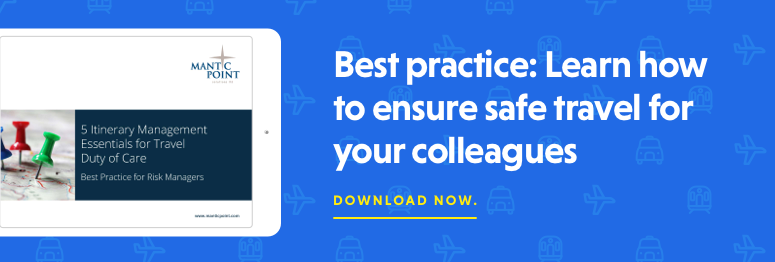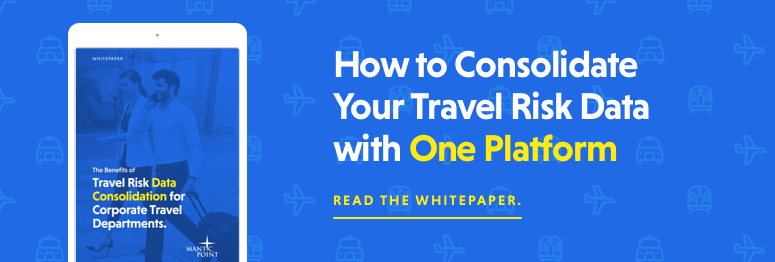5 Travel Itinerary Nightmares and How to Manage Them
Posted by Mike Atherton on 23 December, 2015
Travel Risk Management Travel Apps Traveller Tracking Communication Strategy

Managing travel itineraries is a complex and occasionally nerve-wracking undertaking, but in the event of an incident, you need strategies for travel risk management that support your business travellers effectively.
We recently covered an in-depth scenario demonstrating the ways in which travel itinerary management can alleviate travel risk. However, there are many other ways in which a travel itinerary can be impacted, causing nightmares for travel managers, risk managers and travellers alike.
1. Incidents and Risk Levels Before Travel
When planning travel itineraries, even to familiar regions, you will need to carry out a travel risk assessment. Your travel risk strategy will need to map out acceptable levels of risk for all kinds of business travellers, as well as protocols for incident management and crisis communication.
In an ideal world, when planning and in the run up to any business trip, you would want up to date information on potential risks on any route and in any region. Travel risk maps and updates, such as those provided by our travel risk management service, can provide this information, streamlining planning and reactions to changing situations when paired with a clear travel risk strategy.
2. Flights Cancelled While in Transit
Even without major incident, flight disruptions are an unfortunately common occurrence. If a connecting flight is cancelled, travel itinerary management software can make sure you know while your traveller is still in the air, allowing you to arrange alternative transport, or make the call to re-route your traveller.
3. Emergency Situation while on the ground
In our recent scenario, our unfortunate CIO faced a serious risk while on the ground, and needed to be sent quickly and safely home. Of course, depending on the importance of your employee’s trip, not every incident would lead to an evacuation. If your sales representative is on his usual route through a region when an incident arises, it may simply be a case that he needs to be diverted from one city to another. Having a mobile travel itinerary app as part of your traveller communication strategy ensures that you can communicate changes to travel itineraries, hotel bookings and provide reassurance to your traveller that you are you have his safety in mind.
4. Incidents Affecting Multiple Business Travellers
Every scenario we’ve looked at so far has focussed on affected individuals, but if you’re an enterprise working regularly in a region, you may have more than one affected traveller, or potential affected traveller on the ground or en route. When that’s the case, risk management tools can help you identify which travellers are affected, and provide tailored updates to all travellers in the region.
5. The Line between Business and Leisure
Call it bleisure or call it a bizcation, these days the lines between business travel and leisure are increasingly blurred, and will continue to be so in 2016. Ensuring that your travellers are safe while they are on business is paramount, but if they have downtime between engagements, your duty of care may still apply. Being able to notify your traveller of any issue impacting their itinerary ahead of time will significantly reduce risk.


